I started a series about the ferns I grow, posting blogs in April, May and June this year. It had been my intention to work my way through all the ferns I have but as with so many good intentions, it didn’t happen.
Almost everything I included in those blogs was a plant growing in the ground in my garden. Mostly they were things I’d had for several years and was confident about their performance.
In three blogs I covered 19 different ferns and thought that was most of them. I just did a run round and found a few more, 24 more in fact. Quite a few are small plants in pots, things that haven’t been planted out yet or that I am uncertain about the hardiness of.
Polystichum proliferum.
This handsome and quite large fern originates from Australia where it is widespread between New South Wales and Tasmania. In Cornwall it seems to be just about reliably hardy but in colder parts I wouldn’t be so sure. The fronds get to about 1m in length, initially quite upright but bulbils develop near the tips of the fronds and as they increase in size and weight the fronds arch over until they touch the ground, allowing the bulbil to root into the ground and establish a new plant. This makes it easy to propagate and a back up plant or two can be kept in a pot and given winter protection. New fronds are light green, older fronds darker green, with golden brown scales along the rachis. It doesn’t seem unduly fussy about growing conditions though I would think light shade and adequate moisture to be ideal.
Dryopteris cycadina.
It’s funny what you find out when you’re putting together a blog. Reading up on this species in The Plant Lovers Guide to Ferns, I find that it has been frequently and incorrectly marketed as Dryopteris atrata, a tender fern from India. Elsewhere in the garden I have a fern which I bought as Dryopteris atrata and to be sure, the two plants are pretty similar. Attempting to unravel the truth online doesn’t help. The RHS Plantfinder has an entry for “Dryopteris atrata misapplied”, but no further information, like what it is misapplied to, or indeed any nursery listing for suppliers. They list 11 suppliers for Dryopteris atrata (Wall. Ex Kunze) Ching, which I assume to be the correct designation of the tender Indian species but I would bet that most of the 11 suppliers are supplying Dryopteris cycadina. It only needs one or two wholesale suppliers of plugs or liners, bought and grown on by grower/retail nurseries, for wrongly named plants to become widespread. Three of the suppliers listed are RHS gardens so one would hope that at least they have it right. Dryopteris cycadina has an RHS AGM and is rated H4 for hardiness, ie hardy where average winters get to -10°C to-5°C. Wikipedia doesn’t list Dryopteris atrata on its entry for the genus.
All that aside, this is quite a large fern, to 90cm tall, with striking black scales very prominenet on the emrging fronds.
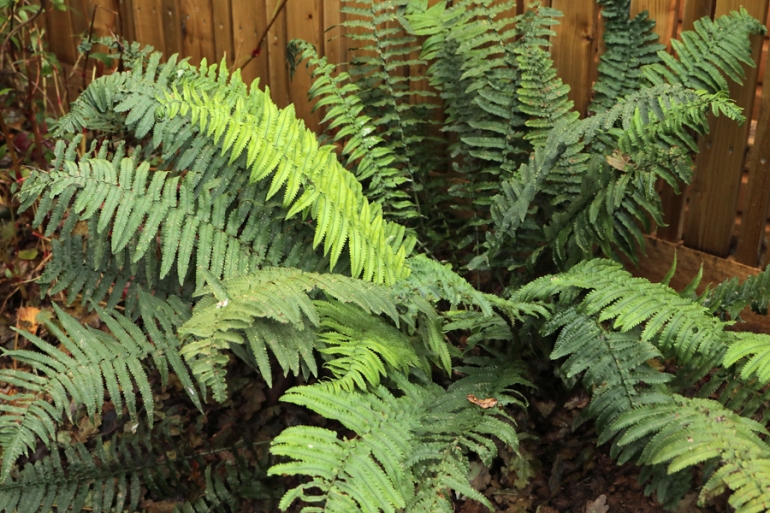
Blechnum wattsii.
This was a very recent purchase and is still in its pot, still in a frost free greenhouse. Its natural range seems to be much the same as Polystichum proliferum so it probably has a similar degree of hardiness but since I paid quite a high price for it I’m not prepared to risk it just yet. It is a very distinctive, robust looking fern not unlike Blechnum chilense and I shall be interested to see how it develops.
Dryopteris sieboldii.
There are a lot of groups of plants that gardeners find fairly easy to dismiss as all looking the same. Certainly there are a lot of ferns that look very similar and the joy of D. sieboldii is that it is not one of them. The leathery fronds have 2-5 pairs of broad pinnae and a long terminal pinnule. They are held low and flat, increasing very slowly in shady places. It originates from Japan and is fully hardy in the UK.
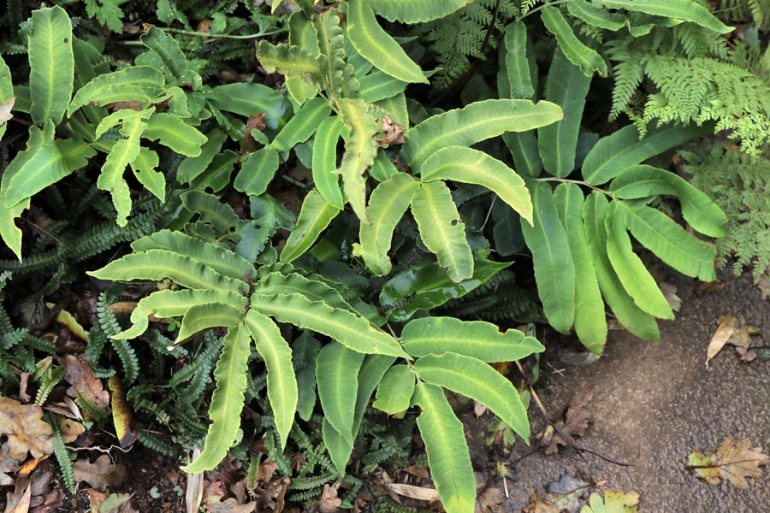
Polypodium vulgare.
Common polypody. This native fern appears to have introduced itself this year. It is extremely common on walls and along hedgerows around here so it perhaps not surprising that it has found a niche in the garden. If it wasn’t so common as a native plant it would seem more interesting, an observation that says more about me than the fern. It is growing on a low brick wall in almost full shade and is neither in my way nor is it jostling anything else for space. It can stay, it’s an improvement on the brickwork.
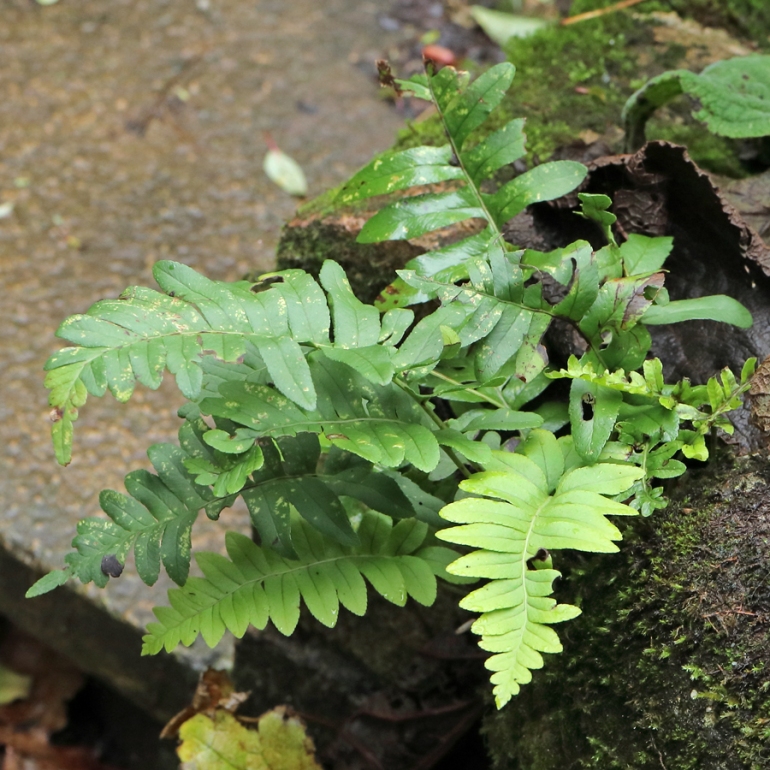
Athyrium nipponicum ‘Burgundy Glow’
This is a fern that I have had for a number of years and it can be relied upon to put on a beautiful display of foliage when it first emerges in spring each year. It doesn’t like drought at all and in 2018 reacted very badly to the hot dry conditions, dying back completely in the summer. It wants to be out of direct sunlight altogether in moisture retentive soil where it will spread to eventually create large clumps. It gets about 30-50 cms tall given good moisture levels. It is beginning to look a bit tatty now and the pictures are from spring but even now it is not without some ornamental value. It will die away completely before long. The colour difference will be due to the light at the time the pictures were taken.




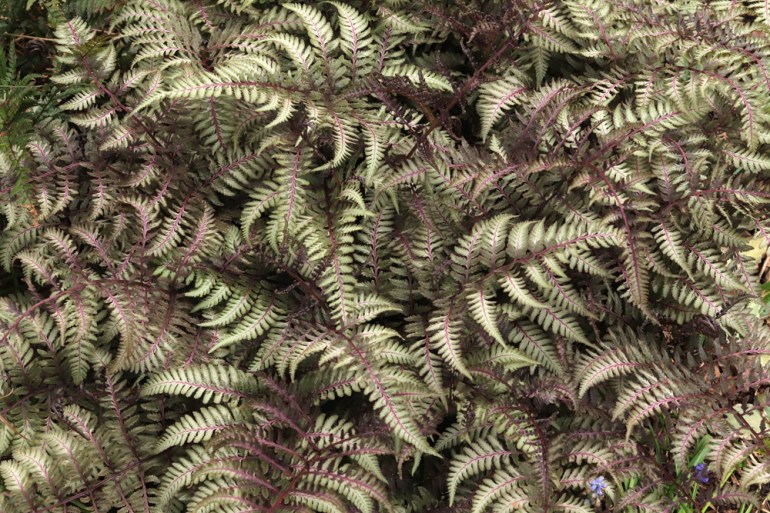
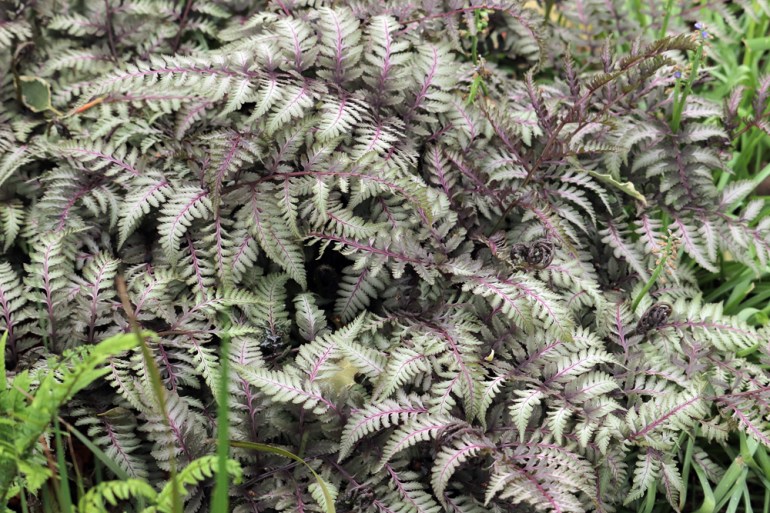
I appreciated ferns more in the chaparral climate of the Santa Clara Valley, where they needed to be watered regularly, and groomed. In the redwood forests just a few miles away, many types grow like weeds. There are too many natives to want to add exotics. We have a few tree ferns that are quite dramatic.
LikeLike
You have native tree ferns?
LikeLiked by 1 person
Oh, what I meant was that we added a few Australian tree ferns, which are exotic.
LikeLiked by 1 person